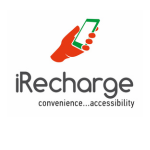Electricity is one of those things that we all use every day, and yet, even with that, the majority of us still have outdated, half-timely, and totally inaccurate perceptions about it.
They influence the way we consume power, most commonly in a negative way, either in charging habits or power cuts. Time to put the record straight, however.
Let’s clear some of the most prevalent myths regarding electricity and discover the reality behind current.
Myth 1: Power is not wasted when appliances are plugged in.
The Reality:
Many appliances continue to consume phantom energy, or standby power, even when they are turned off. If plugged into a socket, chargers, TVs, microwaves, and even electric kettles consume energy at a slow rate. It quietly sucks electricity and incrementally adds up your bill, which is why it is known as “vampire power.”
Tip in a flash: Switch off things you’re not utilizing or utilize power strips to flip them off when not in use.
Myth 2: Brighter bulbs use higher wattages.
The Myth: Not necessarily. Wattage doesn’t measure how bright a lightbulb is; it merely measures how much energy it uses. Lumens measure actual brightness. When all there were around were incandescent light bulbs, this was true.
However, with LED and energy-efficient bulbs, you can now receive brighter light with less power.
Quick tip: Check the lumens rating when buying bulbs—not just the watts.
Myth 3: Generators and “NEPA light” can be used together safely
The Truth:
This is dangerous. Running your generator while the public electricity supply is active can result in severe damage to your appliances—or worse, electrocution or fire. That’s why transfer switches or changeover switches exist: to avoid dangerous back feeding.
Quick tip: Always turn off the main switch before starting your generator, and never try to bypass safety systems.
Myth 4: Charging your phone overnight damages the battery
The Truth:
Modern smartphones are built with intelligent charging systems that stop drawing power once fully charged. So, technically, overnight charging won’t instantly kill your battery. However, keeping your phone plugged in all the time can cause slight overheating and reduce long-term battery health.
Quick tip: Unplug your phone when you wake up. And avoid charging under your pillow—it’s a fire hazard!
Myth 5: Electricity is only expensive because of the cost per unit
The Truth:
It’s more than that. Many homes waste electricity without realizing it—leaving lights on, running empty fridges, using old appliances with low energy ratings. These habits can quietly pile up on your bill, no matter how low your tariff seems.
Quick tip: Audit your daily habits. Small changes like switching to energy-saving bulbs, turning off fans when not in use, and buying energy-efficient appliances can lower your bill significantly.
Myth 6: You can tell how much electricity you’ve used just by the hours of power supply
The Truth:
Not quite. It’s not just about how long you had electricity but what you were running during that time. A small fridge and a couple of lights for 12 hours will cost less than blasting the AC, water heater, and TV for 3 hours.
Quick tip: Pay attention to what appliances consume the most power and manage your usage, not just your hours.
Don’t Let Myths Power Your Decisions
Electricity might be invisible, but the way we use it has very real consequences—for our wallets, our homes, and our safety. By learning the truth behind these myths, you can take back control and use power more intelligently.
And hey, if you’re looking for a smarter way to buy electricity, say goodbye to queues and stress. Just use iRecharge. Fast. Easy. Reliable. Always on your phone.

